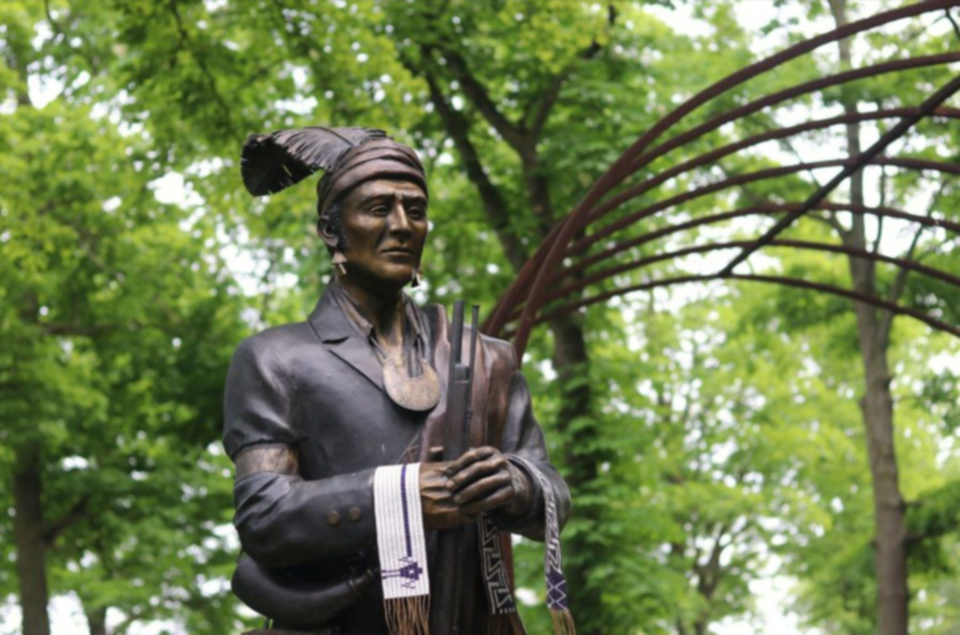A series of three talks hosted by the Niagara Parks Commission will take place every Thursday for the rest of June, highlighting the history of Indigenous people in the Niagara region.
The first talk will focus on the Queenston Heights memorial.
“The Battle of Queenston Heights was critical in the war of 1812, in terms of Canada’s defence,” Tim Johnson, former associate director at the Smithsonian Institute's National Museum of the American Indian, told The Lake Report.
“You have to remember the contribution that Indigenous Peoples made during this very formative period of Canada’s history. The war of 1812 – Indigenous people were very much involved in that.”
Johnson helped lead the design of the Landscape of Nations Commemorative Memorial at Queenston Heights.
With years of experience in education, Johnson knew the memorial needed to be as informative as it was commemorative.
“That’s something we really understood from day one,” Johnson said.
“One of the things that (the memorial) does and exceeds at, is that it becomes a place where school groups can visit and it helps that history come alive.”
For Johnson, ensuring that this integral history of Indigenous and Canadian relations gets renewed was one of the main goals.
“Most of that has been missing from the history books,” he said.
The spatial aspect of learning is important for Johnson to reinforce what comes from the written word. Johnson referred to this as “land-based learning.”
“Words on paper are really supported when you go somewhere and you actually see these representations. It really anchors it,” he said.
Johnson was particularly proud of the relationship between Brock’s Monument and the Queenston Heights memorial in visualizing the relationship between First Nations and the Crown.
“In terms of their spatial relationship, it creates a dialogue that really expands people's understanding of the full 360-degree perspective of this history,” Johnson Said.
“I worked on the National Mall in Washington, D.C., for 10 years, and rarely have I seen two memorials come together that creates this kind of relationship, that also aids the educational imperative.”
While Johnson was responsible for leading the project, the designs themselves came from two well-respected Indigenous artists.
Landscape architect Tom Ridout designed the overall architectural aspects of the monument.
“Tom’s work provided us with a full landscape treatment that made this more than just a single image memorial. And that was incredible,” Johnson said.
Artist Raymond Skye from the Six Nations Grande River community was selected to do the designs for the Indigenous warriors on display at the monument on bronze plaques.
Skye, who has been an artist for over 30 years after decades of working regular jobs, was shocked to have his designs chosen.
“I was glad I was sitting down (when they called me) because I would have fallen over,” Skye joked.
“That was a very pleasant, very exciting surprise. I said, ‘Oh my heavens.’ ”
Skye, though he does not consider himself an educator, draws great satisfaction from using his art to inform and educate viewers.
“The educational aspect (of the memorial) was very rewarding,” he told The Lake Report.
“Because I was not just able to present my artwork from my perspective as an Indigenous artist, I was able to provide the significance of all the imagery, of what history it represents.”
The designs are not just meant to be looked at, “They’re there for a specific reason and that’s to educate people about something in history that had a significant impact,” Skye said.
Skye’s warrior designs were made to reflect the breadth of Indigenous warriors who were involved in the war.
“I was thinking, 'If you were on the battlefield how do you determine who you’re looking at or who you’re shooting at because we all sort of looked the same here?,' ” he said.
“They had these ways of cutting their hair or putting their hair in scalp locks. They would wear feathers or calico shirts.”
Skye said those commonalities led his designs.
“The emphasis is on warrior. Here is what he looks like. He could be Delaware, he could be Oneida or another. But he is a warrior.”
The first talk goes live Thursday at 7 p.m. Go to Niagaraparks.com/indigenous for information and tickets.
- Evan Saunders, Local Journalism Initiative, The Lake Report



